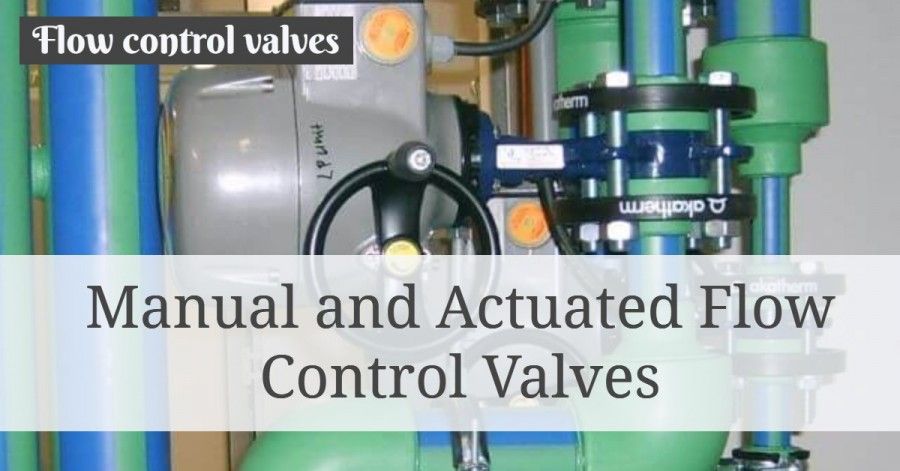Manual flow control valves are valves that are used to start or stop the flow of liquids.
Manual and Actuated flow control valves are valves that are used to start or stop the flow of liquids. Some of these flow control valves are made for necessary manual throttling. Whenever you are looking for a manual flow control valve, always go with those with little pressure drop.
Control valves control the flow of liquids. They react to the signal created by flow meters. These valves are always fitted with actuators and positioners. Pneumatically-actuated control valves are mostly used to control the flow of liquids in the industries. Other types, such as ball and butterfly valves, are used as well.
Control valves also work with hydraulic actuators. These actuators are also referred to as automatic valves. Hydraulic actuators usually respond to pressure changes. Then they will open and close the valve. Actuated flow control valves do not need an outside power source. The fluid pressure opens and closes the pipe.
Types of Manual Flow Control Valves
Each type of manual flow control valve works differently. It works according to the designed application. The following is a short description of the kinds of manual flow control valves and their use.
Rotating Valves
These manual valves are the ones that use a quarter-turn rotation of the closed element. Standard rotating valves are ball, plug, and butterfly flow control valves. These flow valves work well in controlling the flow of wastewater except for butterfly flow valves.
Globe Valves
These flow control valves are the most common ones. They are used to control the flow rate of liquids as well as on/off applications. Globe valves control the flow of fluids by opening the valve plug. These flow control valves have unique features that make them protect the valve seat.
In the globe valve, the pressure drop is more significant than that of other types. The pressure is excellent because the flow channel is s-shaped—this control valve takes a long time when operating because it has to be rotated several times. The turning of the valve is to make it open and close. You should be careful while turning the valve because it may damage the seating area if you turn it too far.
Gate Valves
Gate valves when the user rotates the stem clockwise to close or to open. These valves are used by engineers when they want little pressure loss and free bore. They are used to control the flow of wastewater, potable water, and neutral liquids.
The gate valves are of two kinds. The parallel valve is the first one, while the second is wedge-shaped. The one that promotes a level gate connecting two seats is parallel. On the other hand, wedged-shaped has two ready seats and an entrance that is a little mismatched.
Types of Actuated Flow Valves
A valve actuator uses a mechanical instrument to operate a valve. Power used can be electric, pneumatic, or hydraulic. There are two types of actuated flow types. These are linear and rotary.
Rotary
Just as the name suggests, the rotary flow actuator works by rotating the valves. They are found in many kinds depending on the use. Each of them has an advantage.
Linear
These actuators are different from the rotary. They have to create linear motion for the valve to work. They are also available in different kinds.
Conclusion
Flow valves are essential in controlling the flow of fluids. They help to protect the switches and give accurate results. Adjustable flow control valves are also necessary because they help in making the flow of liquids easy. These flow control valves are available, and you can find them anywhere.



*********daa3467783@gmail.com
ZFA valves are among the top-tier industrial valve manufacturers in China. This company came into being in 2006, and since then has been a top provider in the valve industry. Some of the flagship products of ZFA valves include gate valves, knife gate valves, butterfly valves, and much more. You name it, they have it. If one thinks that they have compromised on quality over quantity, they would be wrong, as all of their products are international standards of ASTM, ANSI, ISO, etc. https://zfavalves.com/